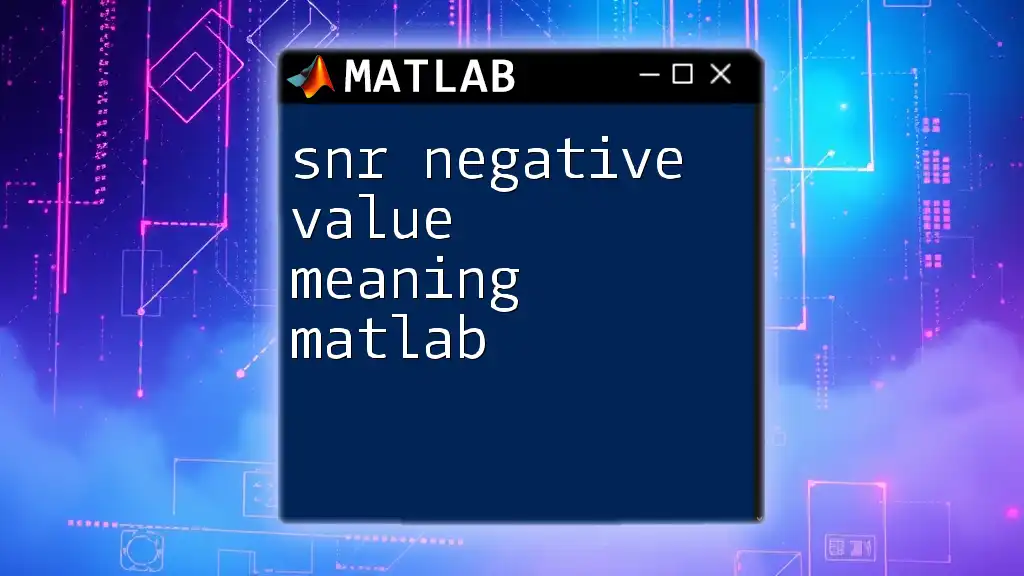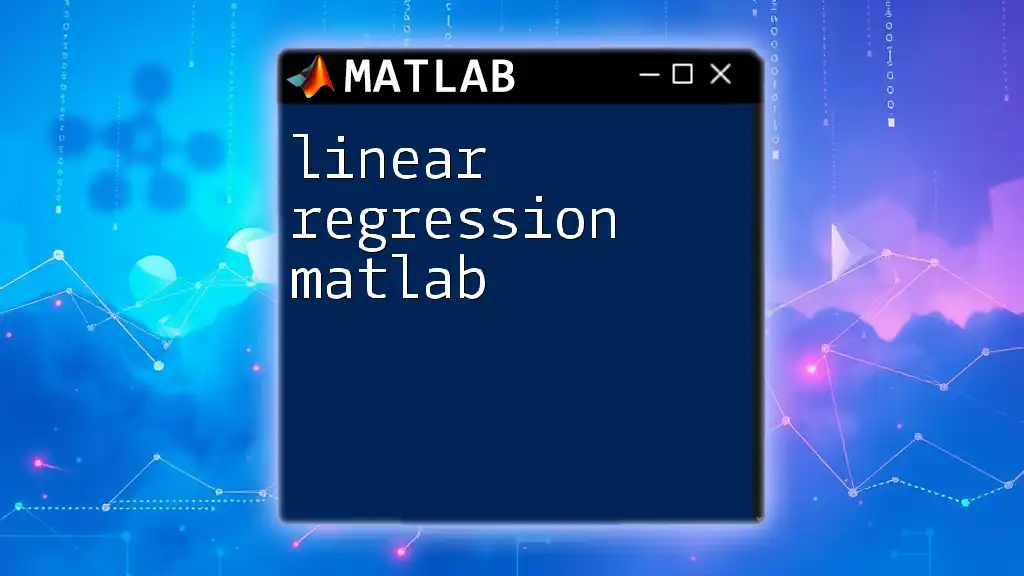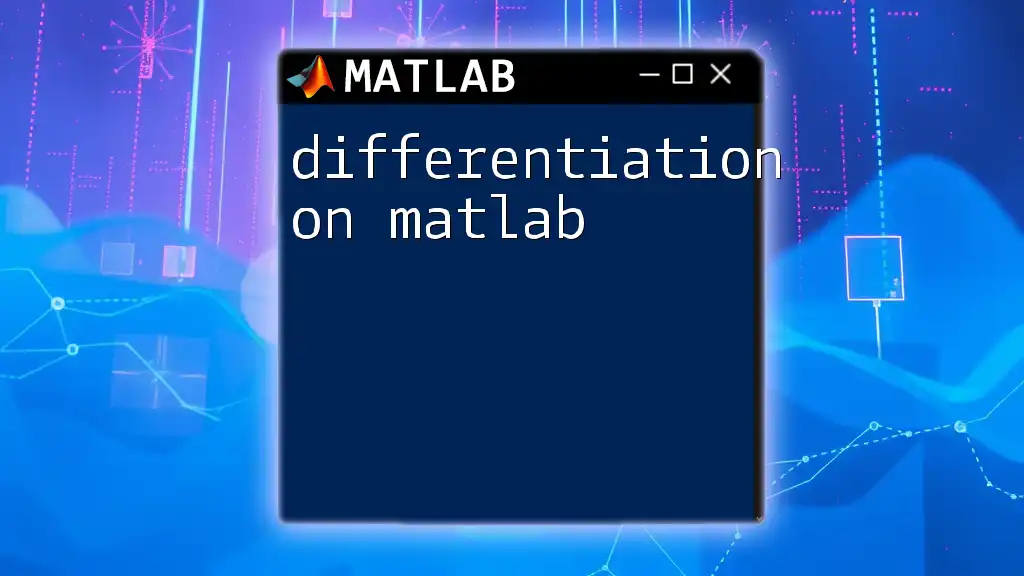Additive White Gaussian Noise (AWGN) in MATLAB can be generated using the `awgn` function, which adds noise with a specified Signal-to-Noise Ratio (SNR) to a signal.
Here's a code snippet to demonstrate how to add AWGN to a signal:
% Generate a sample signal
t = 0:0.001:1; % Time vector
signal = sin(2 * pi * 10 * t); % Example signal (sine wave)
% Add additive white Gaussian noise
SNR = 20; % Specify SNR in dB
noisy_signal = awgn(signal, SNR, 'measured');
% Plot original and noisy signal
figure;
plot(t, signal, 'b', 'LineWidth', 1.5); hold on;
plot(t, noisy_signal, 'r', 'LineWidth', 1.5);
legend('Original Signal', 'Noisy Signal');
title('Signal with Additive White Gaussian Noise');
xlabel('Time (seconds)');
ylabel('Amplitude');
Understanding the Basics of Gaussian Noise
What is Gaussian Noise?
Gaussian noise is a type of statistical noise exhibiting a probability density function (PDF) equal to that of the normal distribution, also known as a Gaussian distribution. This noise is characterized by its bell-shaped curve, where most values cluster around the mean and decay symmetrically towards the extremes. In various fields such as electronics and telecommunications, Gaussian noise is common due to its natural occurrence in various physical processes.
Properties of White Noise
White noise is defined as a random signal with a constant power spectral density. This means every frequency component has equal intensity, making it appear 'flat' across the frequency spectrum. Additive White Gaussian Noise (AWGN) combines these characteristics, serving as a foundational model for understanding how noise affects signal integrity, particularly in communication systems.

The Role of AWGN in Signal Processing
Significance in Communication Systems
AWGN plays a crucial role in the analysis and design of communication systems. It significantly impacts the integrity of transmitted signals, thus highlighting the necessity for robust systems capable of handling noise. In a real-world context, the presence of noise can lead to data loss and reduced clarity. Therefore, evaluating the performance of communication links often requires simulating the effects of AWGN.
AWGN Channel Model
The AWGN channel model is one of the simplest yet most important models used in communications. It assumes that noise is added to the signal as it travels through the channel, which serves as a representation of various environmental disturbances that the signal may encounter. This model allows engineers to devise strategies that ensure successful reception despite the presence of noise.

Generating AWGN in MATLAB
Using Built-in Functions
MATLAB offers a seamless way to generate AWGN through its built-in `awgn()` function. This function enables the user to easily simulate the effect of adding noise to a signal, which is indispensable in testing and training communication systems in various scenarios.
The syntax of the `awgn()` function is as follows:
y = awgn(x, snr, 'measured');
Parameters Explained:
- `x`: This represents the input signal to which you want to add noise.
- `snr`: This is the Signal-to-Noise Ratio in decibels (dB), which determines how much noise is added to the original signal.
- `'measured'`: This option allows the function to measure the power of the input signal dynamically.
Example Code Snippet
Here’s a brief example of how to add AWGN to a sinusoidal signal using MATLAB:
t = 0:0.01:1; % Time vector
x = sin(2 * pi * 5 * t); % Original signal
snr = 10; % Signal-to-noise ratio
y = awgn(x, snr, 'measured'); % Signal with AWGN
Explanation of the Example
In the example, we create a time vector ranging from 0 to 1 second and generate a sinusoidal signal of 5 Hz frequency. We then define the desired Signal-to-Noise Ratio (SNR) at 10 dB and apply the `awgn()` function to introduce AWGN into our original signal. Following this method provides a clear illustration of how noise can affect a simple signal.

Visualizing the Impact of AWGN
Plotting Original and Noisy Signal
To better understand the effect that AWGN has on the signal, you can visualize both the original and the noisy signal:
figure;
subplot(2,1,1);
plot(t, x);
title('Original Signal');
xlabel('Time (s)');
ylabel('Amplitude');
subplot(2,1,2);
plot(t, y);
title('Signal with AWGN');
xlabel('Time (s)');
ylabel('Amplitude');
Discussion on the Plots
In the plots, you’ll observe that the original signal appears clean and is stable, while the signal with AWGN displays irregularities and fluctuations due to the introduced noise. This visual representation highlights the real-world scenario of how noise can corrupt signals, underscoring the need for signal processing techniques to either minimize or manage the effect of AWGN.

Techniques for Reducing AWGN Impact
Signal Processing Techniques
Several strategies can be employed to reduce the impact of AWGN, including filtering, averaging, and adaptive equalization. Each technique has its merits and is chosen based on the specific requirements of the application.
Using MATLAB for Filtering
One common approach to lessen the effects of AWGN is through filtering. MATLAB provides various tools for implementing filters. For instance, you can employ a Butterworth filter, known for its flat frequency response in the passband.
Below is an example of a basic low-pass Butterworth filter implementation:
Fs = 100; % Sampling frequency
cutoff = 10; % Cutoff frequency
[b, a] = butter(6, cutoff/(Fs/2)); % Butterworth filter
filtered_y = filter(b, a, y); % Apply filter
Visualization of Filtered Signal
To see how filtering helps, consider plotting both the noisy and the filtered signals:
figure;
plot(t, y, 'r--'); hold on;
plot(t, filtered_y, 'b-');
title('Noisy vs Filtered Signal');
legend('Noisy Signal', 'Filtered Signal');
This comparative visualization allows you to assess the effectiveness of the filtering process against the introduction of AWGN. The filtered signal should closely resemble the original signal, illustrating successful mitigation of noise.

Applications of AWGN in Real-world Scenarios
Telecommunications
In telecommunications, AWGN is a vital consideration in system design and analysis. When engineers evaluate the performance of cellular networks or internet connections, they must understand how noise affects signal quality and what measures need to be instituted to ensure reliability.
Image Processing
AWGN also finds relevance in image processing, where the clarity of visual data can be compromised by noise. Techniques such as Median Filtering and Gaussian Filtering in MATLAB are often implemented to effectively reduce noise in images, ultimately preserving image quality.

Conclusion
In summary, understanding additive white Gaussian noise (AWGN) is crucial for anyone involved in signal processing or communications. By harnessing the power of MATLAB, you can generate and visualize the effects of AWGN, as well as implement techniques to mitigate its impact. This knowledge equips you to design more robust systems and enhances the integrity of signal communication.
Make sure to experiment with the provided code snippets to deepen your understanding of how AWGN interacts with signals in MATLAB. Continue learning through additional resources, and you will become proficient in overcoming AWGN challenges in your projects!

















